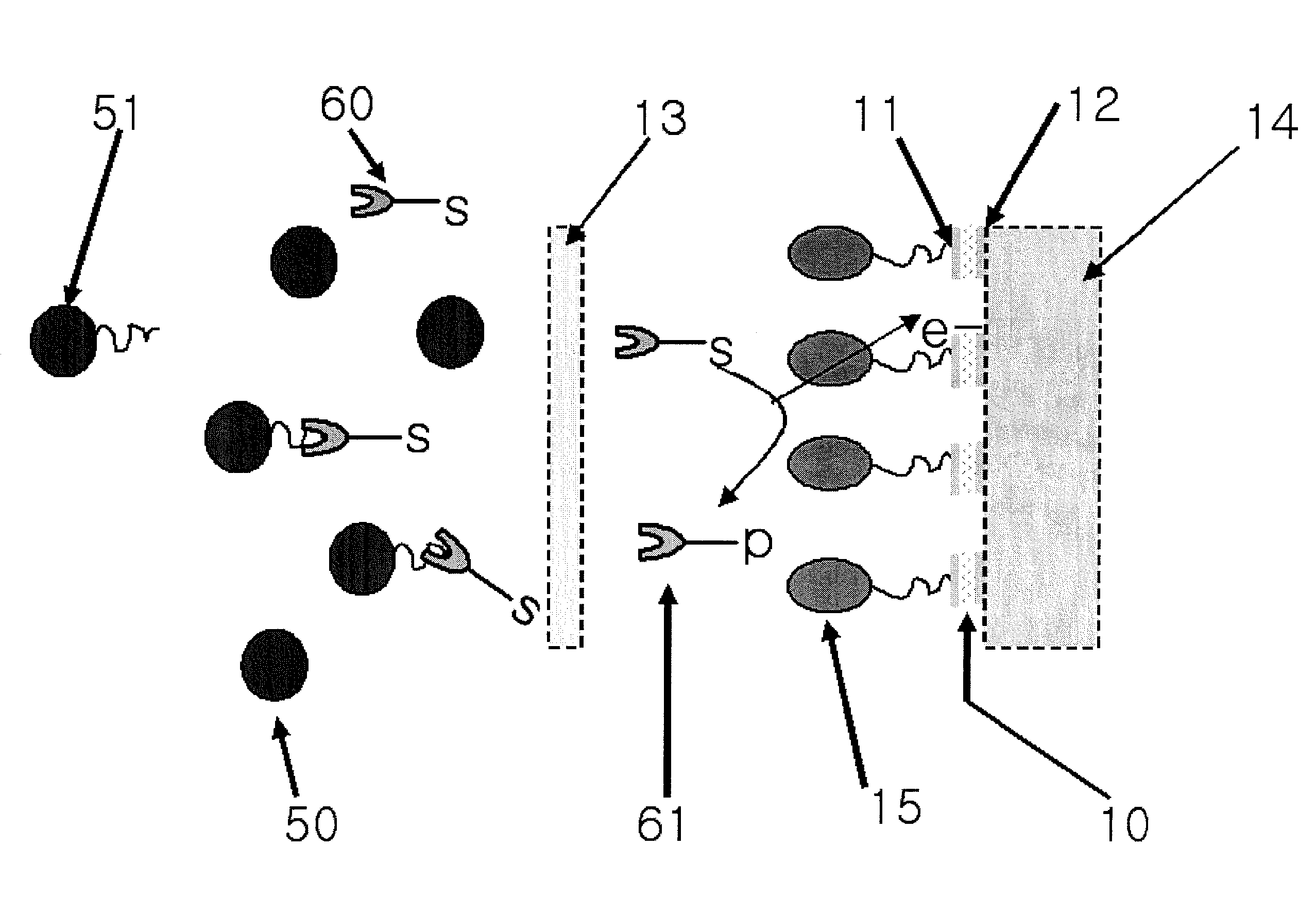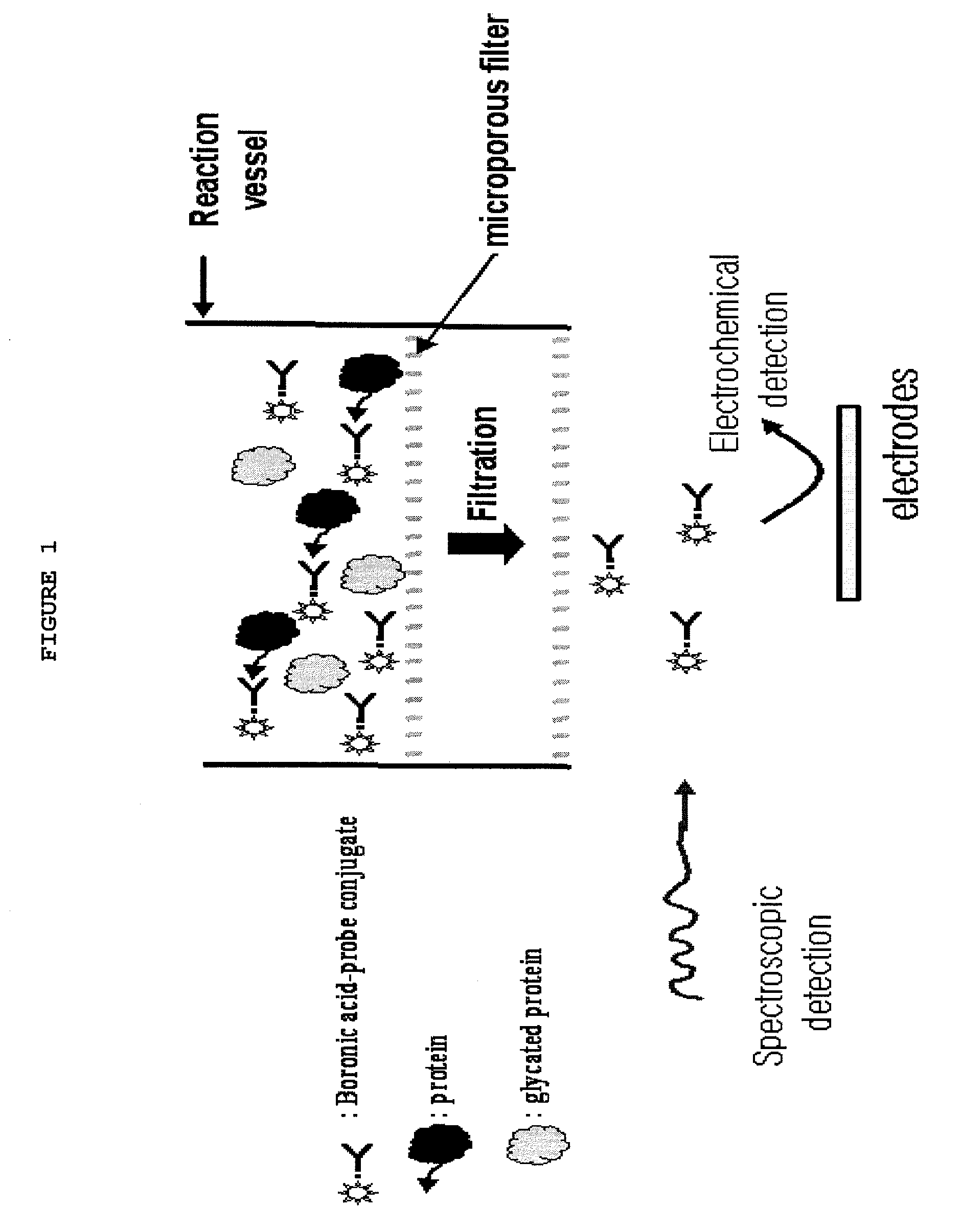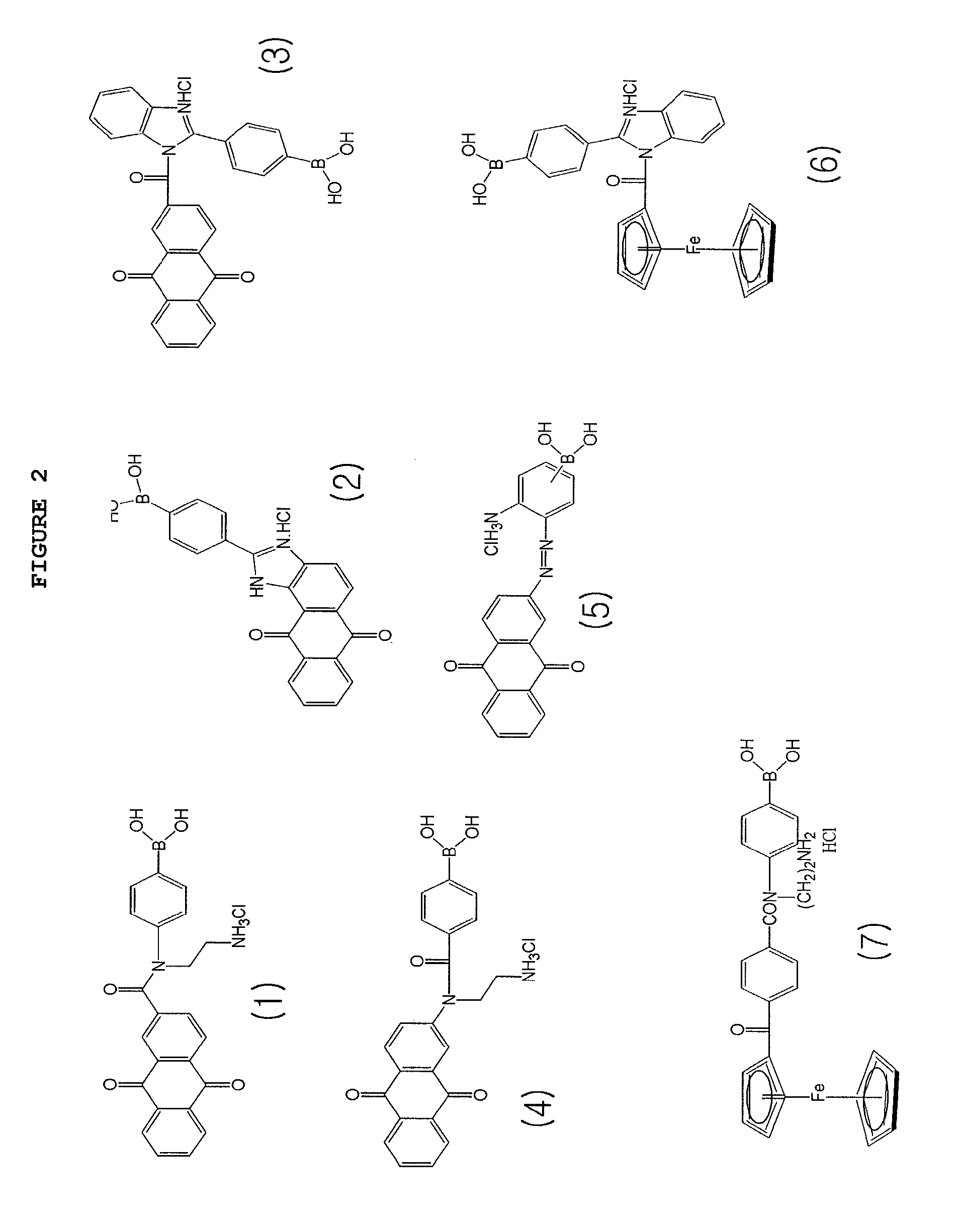Electrochemical determination system of glycated proteins
a technology of electrochemical determination and glycated proteins, which is applied in the direction of liquid/fluent solid measurement, biomass after-treatment, peptides, etc., can solve the problems of inability to use the method practically, difficulty in ensuring the accuracy of blood glucose measurement, and difficulty in the patient to measure blood glucose in conformity with its prescription. , to achieve the effect of reducing interference, reducing cost, and simplifying the configuration of the system
- Summary
- Abstract
- Description
- Claims
- Application Information
AI Technical Summary
Benefits of technology
Problems solved by technology
Method used
Image
Examples
example 1
[0057]0.16 mM of hemolyzed HbA1c arranged by mixing 200 μl of 10% HbA1c control standard solution supplied by Bio-Rad Laboratories with 800 μl of hemolytic was mixed with 500 μl of phosphate buffer of pH 10.5 to arrange samples of 0.128, 0.096, 0.064, 0.032 and 0.0032 mM of 500 μl each. Then, the samples were mixed with p-phenylboronic amine (PBA) dissolved in 500 μl of the same buffer and left them for ten minutes. Subsequently, the samples were put into Ultra-4 Centrifugal Filter Device manufactured by Amicon Inc. to separate hemoglobin proteins. Next, UV absorbancy of PBA contained in the separated solutions was obtained in quartz cells and absorbancy of PBA corresponding to the respective concentrations of HbA1c was measured at 240 nm.
[0058]FIG. 9 depicts the results of measurement, from which it can be understood that the absorbancy of PBA contained in the separated solution is decreased as much as the concentration of HbA1c is increased.
example 2
[0059]An electrode sensor suitable for materializing the concept of the present invention was configured as depicted in FIG. 8. First, a tape 03 having a sample injection path 04 was laminated on a lower substrate 01 of polyethylene (PET), a cellulose film or a nylon film 13 for removing hemocytes and proteins was put thereon and a middle substrate 05 were arranged to fix the film 13. An electrode body 10 including a working electrode 11 and a counter electrode 12 formed with nylon deposited with aurum via vacuum evaporation was put thereon and a middle substrate 06 of double-sided tape fixed the electrode body 10. An absorption pad 14 was fixed on the counter electrode 12 and an upper substrate 02 of PET was provided finally to protect the whole electrode sensor. A sample obtained using ferrocene boronic acid derivative markers of FIG. 2 via the method proposed in Example 1 was injected to the electrode sensor configured as described above and a voltage of +400 mV was applied there...
example 3
[0060]The electrode sensors materialized in the manner of Example 2 were coupled in parallel with each other to configure an electrode sensor assembly as shown in FIG. 11. A sample arranged in the same manner as Example 2 was injected to one electrode sensor and a sample processed with ferricyanides was injected to the other electrode sensor. Then, a voltage of +400 mV was applied thereto to measure currents, thus obtaining signals in proportion to the total amount of hemoglobin. From the ratio of the current signals obtained from the two electrode bodies, abundance ratio of glycated hemoglobin was calculated using the electrode sensor assembly depicted in FIG. 11.
PUM
| Property | Measurement | Unit |
|---|---|---|
| Spectroscopic properties | aaaaa | aaaaa |
| Distance | aaaaa | aaaaa |
| Hydrophilicity | aaaaa | aaaaa |
Abstract
Description
Claims
Application Information
 Login to View More
Login to View More - R&D
- Intellectual Property
- Life Sciences
- Materials
- Tech Scout
- Unparalleled Data Quality
- Higher Quality Content
- 60% Fewer Hallucinations
Browse by: Latest US Patents, China's latest patents, Technical Efficacy Thesaurus, Application Domain, Technology Topic, Popular Technical Reports.
© 2025 PatSnap. All rights reserved.Legal|Privacy policy|Modern Slavery Act Transparency Statement|Sitemap|About US| Contact US: help@patsnap.com



